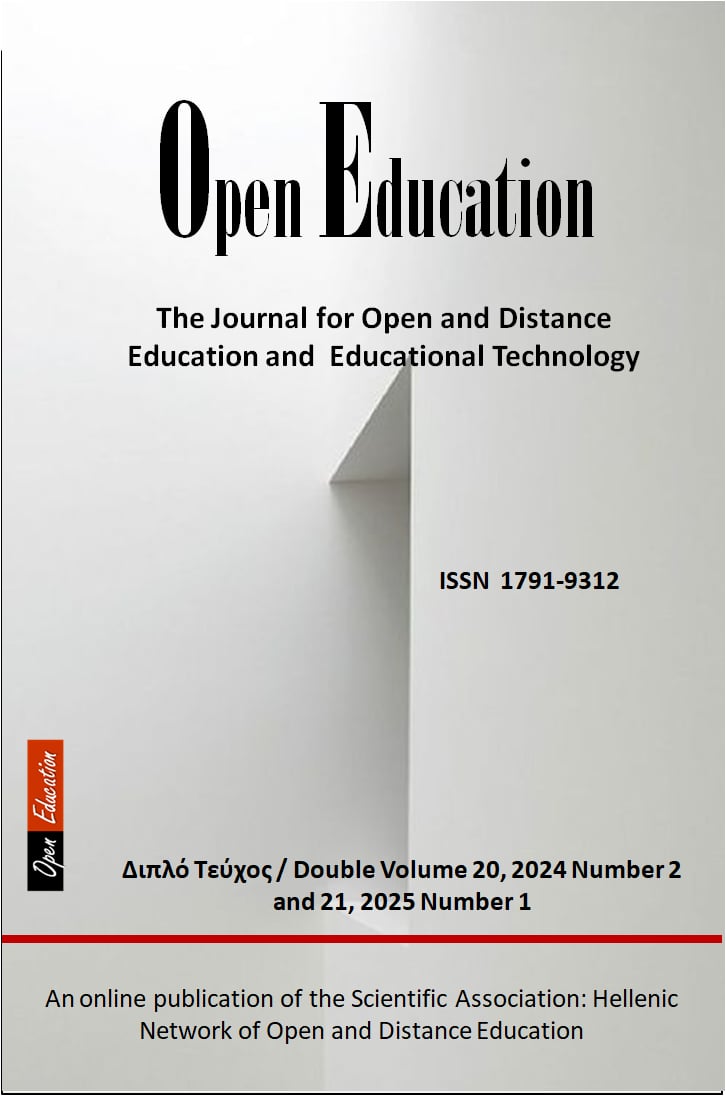O Ρόλος των Μέσων Κοινωνικής Δικτύωσης στην Επικοινωνία στην Τριτοβάθμια Εκπαίδευση: Απόψεις και Πρακτικές Φοιτητών/τριών
Resumen
Τα κοινωνικά δίκτυα είναι ευρέως διαδεδομένα, ιδιαίτερα μεταξύ των νέων ανθρώπων. Καθώς η κοινωνική δικτύωση αυξάνεται διαρκώς, αποτελεί πλέον αναπόσπαστο μέρος και της καθημερινής ζωής των σύγχρονων φοιτητών και φοιτητριών. Εξαιτίας της χρηστικότητας και της ταχύτητας των κοινωνικών δικτύων, παρέχονται νέες ευκαιρίες για την προώθηση της επικοινωνίας και της συνεργασίας στο χώρο της τριτοβάθμιας εκπαίδευσης. Σκοπός της παρούσας έρευνας είναι να διερευνήσει το ρόλο των κοινωνικών δικτύων ως εναλλακτικό δίαυλο επικοινωνίας και συνεργασίας στην τριτοβάθμια εκπαίδευση και να απαντήσει σε ερευνητικά ερωτήματα που σχετίζονται με το ρόλο αυτό. Συγκεκριμένα, ερευνά ποιο είναι το επίπεδο χρήσης των κοινωνικών δικτύων, ποια είναι τα πιο δημοφιλή κοινωνικά δίκτυα ανάμεσα στους φοιτητές και στις φοιτήτριες, αν γίνεται χρήση των κοινωνικών δικτύων για μαθησιακούς σκοπούς και ποια είναι τα πλεονεκτήματα και τα μειονεκτήματα από τη χρήση αυτή. Για τη διεξαγωγή της έρευνας αξιοποιήθηκε η ποσοτική μέθοδος έρευνας με δημοσκόπηση και το δείγμα 235 φοιτητών/τριών ελληνικών Πανεπιστημίων, συμπλήρωσε ένα διαδικτυακό ερωτηματολόγιο. Από την στατιστική ανάλυση των δεδομένων που συλλέχθηκαν, διαπιστώθηκε ότι οι φοιτητές/τριες αφιερώνουν πολλές ώρες την ημέρα στη χρήση των κοινωνικών δικτύων, χρησιμοποιούν αρκετά από αυτά και η πλειοψηφία τα αξιοποιεί για μαθησιακούς σκοπούς και θεωρεί ότι έχουν πολλά πλεονεκτήματα, με κυριότερο το ρόλο τους στην επικοινωνία και συνεργασία με τους συμφοιτητές και τις συμφοιτήτριές τους, αλλά και κάποια μειονεκτήματα, όπως ότι προκαλούν απόσπαση προσοχής και αυξάνουν τις ανησυχίες για την ιδιωτικότητα και την ασφάλεια. Συμπερασματικά, τα ευρήματα της έρευνας υποδεικνύουν ότι τα κοινωνικά δίκτυα χρησιμεύουν ως ένα δυναμικό εργαλείο, ενθαρρύνοντας την επικοινωνία και τη συνεργασία μεταξύ των φοιτητών και φοιτητριών.
Article Details
- Cómo citar
-
- Sección
- Άρθρα

Esta obra está bajo una licencia internacional Creative Commons Atribución-NoComercial-CompartirIgual 4.0.
Οι συγγραφείς των άρθρων που δημοσιεύονται στο περιοδικό διατηρούν τα δικαιώματα πνευματικής ιδιοκτησίας επί των άρθρων τους, δίνοντας στο περιοδικό το δικαίωμα της πρώτης δημοσίευσης. Άρθρα που δημοσιεύονται στο περιοδικό διατίθενται με άδεια Creative Commons 4.0 και σύμφωνα με την άδεια μπορούν να χρησιμοποιούνται ελεύθερα, με αναφορά στο/στη συγγραφέα και στην πρώτη δημοσίευση για μη κερδοσκοπικούς σκοπούς και με δικαίωμα τροποποίησης μόνον με παρόμοια διανομή (αν αναμείξετε, τροποποιήσετε, ή δημιουργήσετε πάνω στο υλικό, πρέπει να διανείμετε τις δικές σας συνεισφορές υπό την ίδια άδεια όπως και το πρωτότυπο).



